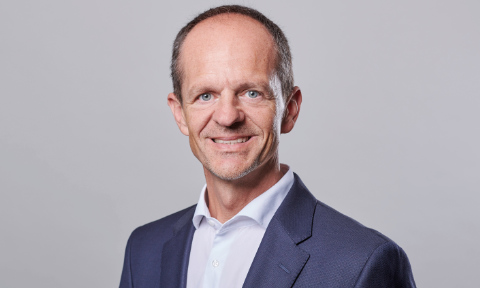
17 Nov Endoprosthesis register: The A2® short stem is again ahead
Endoprosthesis register: The A2® short stem is again ahead
We eagerly awaited the annual report of the German Endoprosthesis Register (EPRD). It is the seventh report since the register was launched ten years ago. It’s the fifth year of follow-up for our A2® short stem – again with outstanding results.
We spoke to Mario Frank, member of the management and developer of the company ARTIQO, about the supply trends that can be read from the EPRD and about the importance of the EPRD results of the A2® system for the further acceptance and spread of short sockets.
What do you think are the most important results of the EPRD report 2022?
Mario Frank: With the lowest probability of failure of 2.3% within five years, the A2® short stem takes the top position in elective cementless primary hip replacement. As with the previous EPRD reports, we see our development work on a calcar-guided short-shaft system as confirmed. In this reporting segment, the A2® short shaft is measured against short shaft and standard systems and shows excellent performance.
One often hears that the positive revision balance of the short sockets is only so good because they are mainly used in younger patients with a lower risk. How do you see it?
Mario Frank: There is an evaluation based on the EPRD data that can invalidate this assumption. In the work, comparable groups were created by adjusting them for influencing factors such as patient age, gender, co-morbidities, hospital volume and the bearing couples used. The evaluation shows that calcar-guided short stems like the A2® stem have a significantly lower infection rate compared to standard stems.[1] We know that 16.7 % of loosening are due to infections. Here the short shaft has the clearly better record.
The register now clearly shows that the success of the short shafts is at the expense of the established standard systems, some of which have been on the market for decades. Can you explain that to us?
Mario Frank: While the number of fittings is stagnating overall, we see a further strong increase in short-stem fittings as a counter-trend. The EPRD report states that for the first time in the surgical year 2021, short stems account for 12% of all hip implantations. In 2015 it was still 6.6%. If you only look at the elective hip implantations, it is even a share of around 17%.
This development can also be observed very well based on the tracked number of the respective shaft systems. The A2® short stem is one of a total of 58 followed-up primary stems and is being followed up with a total of 7,055 fittings. This puts it in 12th place – only 11 socket systems have a higher number of sockets tracked. The A2® socket shows an increase of 47% compared to the previous year’s report and is thus growing disproportionately compared to established socket systems.
What do you think are the reasons for this positive development of the A2® socket?
Mario Frank: In addition to the lower probability of failure and the better infection rate, which we have well documented with the EPRD, the A2® short stem is a thoroughly modern implant because it can be used very well for minimally invasive access and can individually reconstruct a wide variety of anatomies . The A2® short stem is the system that most consistently does justice to the idea of the calcar-guided stem. It shows its advantages in the reconstruction of the femoral lateral and anterior offset, the adaptation to the individual CCD angle and ensures a more physiological force application. Last but not least, it can be easily integrated into the routine operation of the clinic. We receive feedback from our customers that these product properties are very important arguments for using the A2® short stem in their patients.
So the A2® is growing disproportionately while outstripping classic standard systems. Is the A2® stock developing into the standard system?
Mario Frank: We can confirm this by talking to our customers about the range and depth of use of the A2® short shaft. What makes a standard system? That it is a well thought-out range for a variety of individual anatomies and femur morphologies. We can confidently claim that for the A2® socket.
Is the new cemented A2® short stem a logical addition to the range?
Mario Frank: Yes, you could say that. For patients aged 75 and over, the EPRD advocates a cemented restoration. It is therefore logical to also offer a cemented A2® short stem variant – as a solution for older patients and as a sensible addition to the range for Dorr type C morphologies and for patients with an osteoporotic bone structure. With its cemented version, the A2® short stem has a unique position among the short stem systems.
Das Interview führte Michaela Rau, freie Redakteurin.
[1] Steinbrück, A., Grimberg, A.W., Elliott, J. et al. Orthopäde 50, 296–305 (2021). https://doi.org/10.1007/s00132-021-04083-y

EPRD Endoprosthesis Registry Germany
In the purely voluntary endoprosthesis register, more than 1.4 million data sets on hip and knee endoprosthetics were created by 2019. The operations are documented to this day. In 2019, 450,000 hip and knee endoprosthetics were performed (unchanged from 2018), of which 315,088 were documented in the EPRD. That is 70% of all hip or knee endoprosthetics performed in Germany in 2019.
The EPRD is currently one of the registries with the world’s highest annual collection figures and is one of the world’s largest registries in terms of case numbers. As an independent national register, the EPRD wants to improve the quality of hip and knee fittings. A mandatory register is in the works.
(Source:www.eprd.de)

